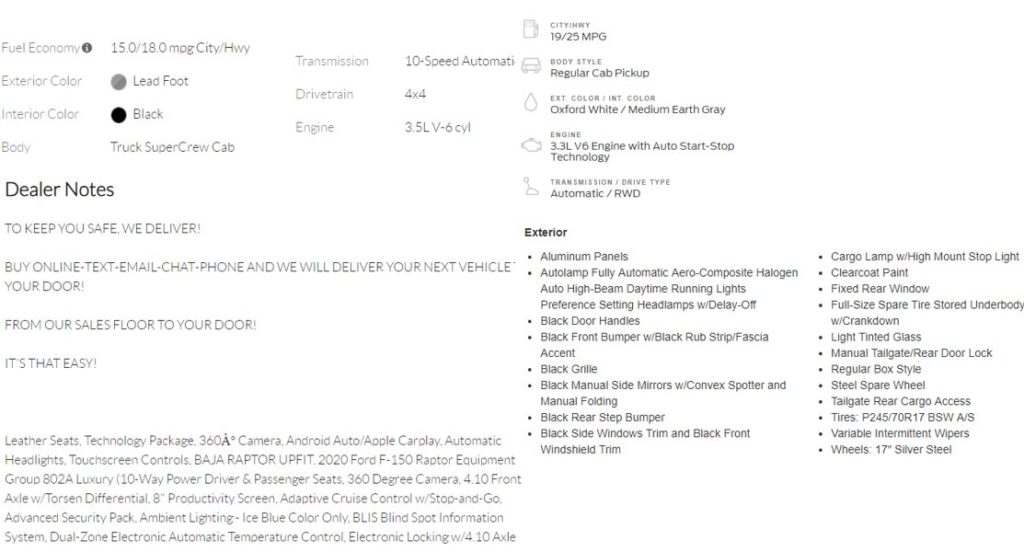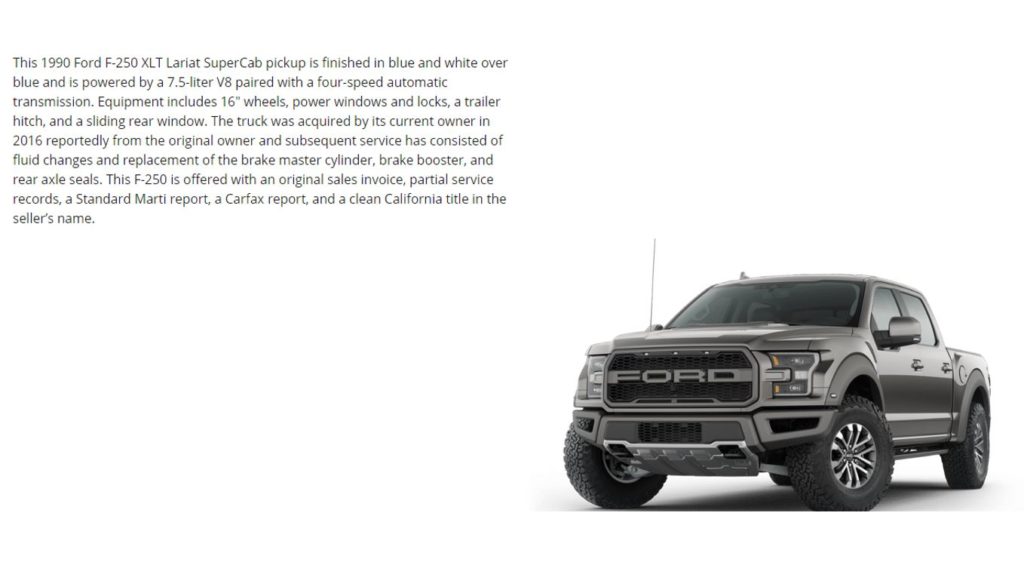Despite all of the accolades that we may receive (Presidents Award, the Diamond Club, etc.) the fact of the matter remains – dealers are terrible at selling vehicles. I don’t mean the sales person on the front line who is still trying to learn the basic models during their second week on the job. I mean the dealership itself. That is why you can commonly find vehicles on eBay, Craigslist, and BaT that were bought from a dealership and immediately flipped for more gross than the dealer earned. I recently had dinner in Miami with a wholesaler who said a core part of his business is buying and wholesaling cars from dealerships. Luckily the fix is simple. We, as dealers, need to know what we are selling before we can know how to sell it.
The argument can be made with either new or used vehicles. For the sake of choosing a path, let’s look at new vehicles. At the time of writing this article, there were 46,988 new Ford F-150’s listed on AutoTrader. Sorting from highest to lowest price, the trucks ranged from $142,135 for a Shelby Raptor to $19,995 for a work truck. The average person in the car business doesn’t need to see the pictures to visualize the trucks I’m talking about. The work truck is white exterior with grey vinyl seats sitting on four steelies. As utilitarian as they come. The Shelby, on the other hand, is every bit as mean and gnarly as you’d expect, from the embossed brush guard to the oversized body panels. Only Dwayne “The Rock” Johnson is certified to drive this 525 horsepower fire-breather. When it comes to the description of the vehicles in the ads, there was almost no difference between the two. There’s not even a mention of the Shelby’s horsepower. What’s more, the work truck has 50% more photos (29) than the truck with a sticker price that’s 7x greater. In fact, the dealership group listing the Shelby Raptor had more photos posted for their lowest-priced new vehicle, an $11,000 Chevy Spark, than they did for the Raptor.
The advertisement for the Shelby, the fiercest truck in North America, starts with “leather seats, technology package.” What follows is the typical alphabetical ordering of features such as the 360-degree camera system, Apple Carplay, and automatic headlights. Only because the Raptor is a “Baja Edition” does the description even mention that the truck is seriously cool anywhere in the listing, let alone at the beginning of their exhaustive list of random specifications. What stands out to me is that leather seats and technology aren’t in alphabetical order, so someone at the store intentionally put those first as if they’re the highlight of the vehicle. Whether it was user error or a technology glitch, the Raptor description also had mistakenly listed the options for another unknown vehicle as well, highlighting the cloth seats. For argument’s sake, let’s compare the Raptor listing to the listing of a 1990 Ford F-250 on Bring A Trailer that was bid to $6,000 at the time of writing this article.

Not only does the Bring A Trailer listing “sell” what is most interesting about the vehicle. The listing for a 31-year-old truck has 214 photos, including close-ups of the interior, the options, and the original window sticker. In many examples, Bring A Trailer listings often include the numbers of each production combination (i.e. this is one of 5 examples in 1990), which is presumably an important factor when you’re selling a limited-edition vehicle like say… a 2020 Raptor Baja Edition. On a recent Automotive News webinar, the head of strategic partners at eBay Motors stressed that their value proposition is evoking an “emotional response” to create a want or need for a certain vehicle. This is done through quality content and solid photography. “Selling” the vehicle for what it is. This is increasingly relevant when most customers make up their minds before they even step on the dealership’s lot. Most of our examples have been about hot trucks, but the same can be said about selling base-level Honda Civics. If someone is buying a Honda Civic they’re likely thinking affordability and/or reliability. A local Civic listing I looked at had AM/FM radio listed first, along with cup holders, and glove box. Those aren’t selling points. Those are foregone conclusions in 2021. There was nothing about all of the awards that Civic has earned over the past 30 years or that it can get up to 42 miles per gallon.

As automotive professionals, we have long believed that we need to sell the customer when they walk on the lot. That has created a massive disconnect between us and our customers. They don’t want to be sold. Realistically, we don’t even need to “sell” the car. The car can sell itself if only we spent the time to understand what it was that we are selling. A Civic isn’t sold the same way as a limited edition Baja Raptor and the process around them can’t be the same either. If you want to hold gross, on both new and used vehicles, then the age of digital retailing will require more than simply scanning the barcode on the door jam. It is about taking the time to understand the motivations behind purchasing a particular vehicle and figuring out how to put that into words and pictures to evoke an emotional response. I’m not a pick-up guy, but just hyping the Baja Raptor in this article makes me one to buy one.


